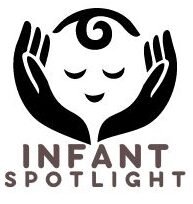Babies are known for their adorable babbling, and as a parent or caregiver, it’s fascinating to watch them develop their language skills. But have you ever wondered when babies typically start babbling? In this article, we will explore the timeline of a baby’s babbling journey and uncover the exciting milestones along the way. So get ready to witness the delightful world of baby babbling!
Typical development timeline
Cooing stage
The cooing stage typically occurs between the ages of 2 and 4 months. During this stage, your baby will start making various vowel sounds such as “ooh” and “aah.” Cooing is an important milestone as it signifies the development of your baby’s vocal cords and the ability to produce sounds. It is also an exciting time for parents as they can engage in vocal exchanges with their little ones, creating a stronger bond and facilitating language development.
Babbling stage
Around the age of 6 months, your baby will enter the babbling stage. During this period, they will produce more complex combinations of sounds, including consonants. You may hear them repeating syllables like “ba-ba” or “da-da.” Babbling is an essential developmental milestone as it indicates the progression towards language acquisition. It allows babies to practice the motor skills required for speech production and experiment with different sounds.
Varied babbling
Between 8 and 10 months, babies enter the varied babbling stage. At this point, their babbling becomes more diverse, as they start using a wider range of consonants and vowel sounds. Instead of repeating the same syllables, they begin to produce different combinations, such as “ma-ga” or “da-bu.” This stage is significant as it demonstrates their growing ability to control their vocal mechanisms, preparing them for the next phase of speech development.
Reduplicated babbling
Reduplicated babbling typically occurs between 9 and 12 months. During this stage, your baby starts using repetitive syllables like “mama” or “dada.” This repetition of sounds is an exciting development as it resembles the patterns of real words. It shows that your baby is refining their motor skills and enhancing their understanding of the connection between sound and meaning.
Jargon stage
Around the age of 10 to 15 months, babies enter the jargon stage. During this period, their babbling becomes more expressive and resembles actual speech, even though the words themselves may not be intelligible. They start using inflections, rhythm, and tone, mimicking the conversational patterns they observe around them. The jargon stage is pivotal as it signifies the transitioning from babbling to true language development, with babies experimenting with the non-verbal aspects of communication.
Factors affecting babbling onset
Hearing abilities
Hearing abilities play a crucial role in the onset and progression of babbling. Babies with intact hearing can perceive and imitate sounds more accurately, which aids in their speech development. If your baby shows signs of not responding to sounds, not turning their head toward noises, or not showing interest in daily sounds, it is crucial to have their hearing evaluated by a professional. Early identification of hearing issues can lead to appropriate interventions, ensuring your baby’s language development is on track.
Motor skills
Motor skills, specifically those related to oral movement and coordination, are essential for babbling onset. Adequate control of the lips, tongue, and jaw enables babies to produce a variety of sounds and syllables. If your baby demonstrates difficulty with oral motor skills, such as delayed feeding milestones, difficulty sucking, or limited tongue movement, it may be necessary to seek professional evaluation and early intervention. Providing assistance and therapy tailored to your baby’s needs can greatly support their babbling and overall speech development.
Environmental factors
The environment in which a baby grows and learns plays a significant role in their babbling onset. Babies exposed to a rich linguistic environment, with parents or caregivers who engage in meaningful conversations and frequently talk to them, are more likely to start babbling earlier. Surrounding your baby with language-rich activities, such as reading aloud, singing, and talking about everyday experiences, creates a nurturing environment that encourages babbling and language development.
Social interaction
Social interaction plays a vital role in the development of babbling. Engaging and interactive communication with parents and caregivers provides babies with opportunities to engage in turn-taking, imitate sounds and gestures, and learn the patterns of conversation. Responding to your baby’s babbling with enthusiasm and imitation encourages further exploration and helps them develop their communication skills. Creating a supportive and responsive social environment allows babies to develop their language and communication abilities more effectively.
Cooing stage
Age range
The cooing stage typically occurs between the ages of 2 and 4 months.
Sounds produced
During the cooing stage, babies produce sounds such as “ooh” and “aah.” These vocalizations are typically vowel sounds.
Developmental significance
The cooing stage is significant as it indicates the development of your baby’s vocal cords and the ability to produce sounds. It is an exciting time for parents as they can engage in vocal exchanges with their little ones, creating a stronger bond and facilitating language development.
Babbling stage
Age range
The babbling stage begins around 6 months of age.
Sounds produced
During the babbling stage, babies produce more complex combinations of sounds, including consonants. They may repeat syllables like “ba-ba” or “da-da.”
Developmental significance
The babbling stage is a crucial milestone as it signifies progress towards language acquisition. Babies practice the motor skills required for speech production and experiment with different sounds, laying the foundation for their future language development.
Varied babbling
Age range
Varied babbling typically occurs between 8 and 10 months of age.
Sounds produced
During this stage, babies use a wider range of consonants and vowel sounds. Instead of repeating the same syllables, they start producing different combinations like “ma-ga” or “da-bu.”
Developmental significance
Varied babbling represents the growing ability of babies to control their vocal mechanisms, preparing them for the next phase of speech development. The introduction of a wider range of sounds indicates progress in their ability to communicate effectively through speech.
